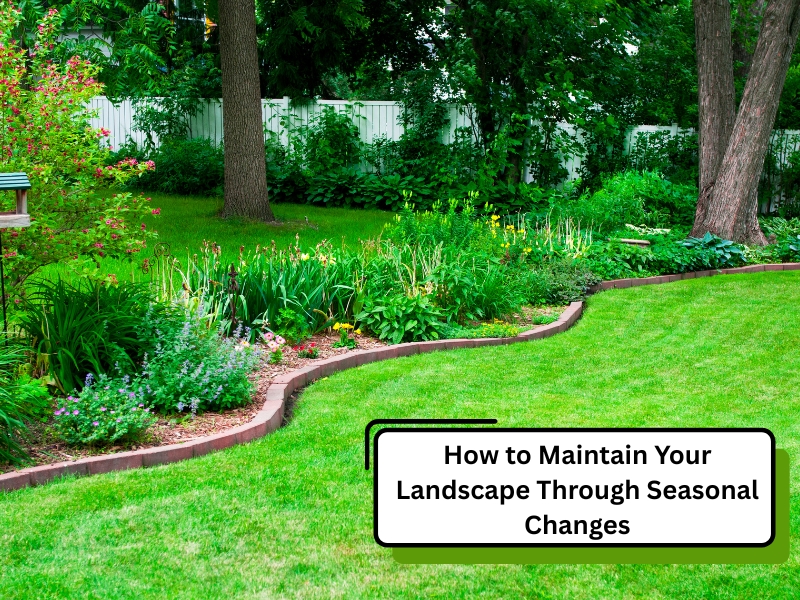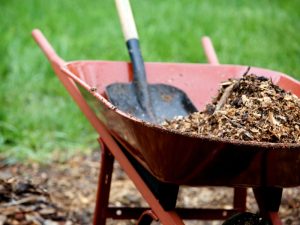Maintaining a beautiful and healthy landscape through seasonal change requires effort, especially with the changing seasons. From scorching summers to chilly winters, each season brings unique challenges that can affect the health of your garden. If you’re keen on preserving the beauty and functionality of your outdoor space throughout the year, it’s essential to understand how to adjust your maintenance routine as the seasons change. In this article, we’ll walk you through practical ways to maintain your landscape through each season to ensure its vitality.
Why is Seasonal Maintenance Important for Your Garden?
Seasonal maintenance is crucial for ensuring your garden thrives throughout the year. Different seasons have varying effects on plant growth, soil conditions, and the overall health of your landscape. By staying on top of your garden’s needs, you can address potential problems before they escalate.
- Prevents plant stress: Seasonal changes can stress plants if not properly maintained, leading to weaker growth and disease susceptibility.
- Optimises water usage: Proper maintenance ensures your garden gets the right amount of water at the right time, saving resources and keeping plants healthy.
- Enhances seasonal blooms: Timely care encourages plants to bloom at their peak during the right season, adding beauty to your landscape.
- Prevents soil erosion: Seasonal care helps manage soil health, preventing erosion or compaction.
- Protects against pests: Regular seasonal checks can help you spot and eliminate pests that thrive in specific seasons.
Seasonal maintenance ensures that your landscape adapts through seasonal change, remaining vibrant, healthy, and manageable. With the proper care, your garden can thrive year-round.
When Should You Begin Preparing Your Landscape for Seasonal Change?
Preparing your landscape for the upcoming season should start well in advance. While each season requires preparation, monitoring your garden regularly and anticipating seasonal changes is key.
Season | Tasks |
Spring (Sep - Nov) | Clean the garden, prune dead branches, and add fresh mulch to prevent weeds. |
Summer (Dec - Feb) | Mulch to conserve moisture and ensure plants get adequate water for heat survival. |
Autumn (Mar - May) | Plant winter crops and bulbs, and clean fallen leaves and debris. |
Winter (Jun - Aug) | Protect frost-sensitive plants and prune trees properly. |
Planning and starting seasonal preparations helps prevent stress on your plants, choose the best type of mulch for landscaping, and keep your landscape looking its best.
Is Watering Different in Each Season for Landscape Care?
Watering your garden is a key element of landscape care, but the amount and frequency depend on the season. Each season has different moisture needs, and understanding how much water your plants require can prevent drought stress and water wastage.
- Summer: Water deeply and early in the morning to avoid evaporation. Consider drought-tolerant plants to reduce water usage.
- Winte): Reduce watering, as cooler temperatures and rain often meet the plants’ needs. Ensure that drainage is good to avoid waterlogging.
- Spring: Increase watering as the temperature rises, but avoid over-watering as plants begin to bloom and need balanced hydration.
- Autumn: With cooler temperatures and increased rainfall, soil temperature becomes important for autumn planting. You can reduce watering frequency and check soil moisture accordingly.
Watering your landscape according to the needs of each season ensures healthy plant growth, conserves water, and reduces the chance of fungal infections caused by over-watering.
How Can You Protect Your Landscape from Seasonal Extremes?
Extreme weather conditions like heat waves, frosts, or heavy rain can harm your landscape. Taking preventive measures during these times can help safeguard your plants and garden structures.
- Mulch your garden beds: Mulch helps to retain moisture during summer and insulate plants during winter.
- Use frost covers: Protect tender plants in winter with frost blankets to prevent damage from cold snaps.
- Install irrigation systems: Automatic watering systems can help deliver water efficiently during hot weather, reducing plant stress.
- Prune for airflow: Trim back overgrown branches and leaves during rainy periods to allow better airflow and reduce the chances of fungal infections.
Protecting your landscape from seasonal extremes can help your garden thrive no matter the weather.
Which Landscaping Practices Are Essential for Each Season?
Certain landscaping practices must be followed through seasonal change to ensure your garden remains healthy and looks its best. Seasonal tasks like mulching, pruning, and planting can make a big difference.
- Summer (December – February): Water, mulch, and check for pests are the priorities during this time. Dead branches can also be pruned.
- Autumn (March-May): Plant cool-season vegetables, prepare garden beds for the winter, and remove fallen leaves to prevent fungal diseases.
- Winter (June – August): Limit your activities, cover frost-sensitive plants, and check trees for structural integrity.
- Spring (September – November): Plant seasonal flowers, vegetables, and trees. Fertilise your garden beds to promote growth, and trim any overgrown plants.
Each season requires specific care practices to address your garden’s unique needs. By adhering to these practices, you’ll have a vibrant and well-maintained landscape through seasonal change, ensuring it thrives year-round.
How Does Seasonal Change Affect Different Types of Landscaping?
Different landscaping elements require different types of care throughout the year. Each feature, from lawns and garden beds to trees and shrubs, has its own seasonal needs.
Landscaping Element | Spring & Autumn | Summer | Winter |
Lawns | Thrive, need moderate care | Requires extra water and shade | May go dormant, minimal care |
Garden beds | Best time for planting | Warm-season plants thrive | Cool-season plants may survive |
Trees & Shrubs | Prune and shape | Need extra water, protect from heat | Prune and protect from cold winds |
Water features | Regular cleaning | Check water levels | Clean before freezing temperatures |
Different landscaping and garden design elements require tailored care to maximise longevity and aesthetics. Understanding how each element responds to seasonal changes is key.
Can You Maintain Your Landscape Without a Professional?
While some landscaping tasks can be done on your own, there are times when professional help is needed, especially for complex tasks or large-scale maintenance. Here’s what you can do on your own versus when to call in experts.
- DIY-friendly tasks: Regular weeding, watering, mulching, and planting seasonal flowers are tasks you can manage with the right tools and knowledge.
- Professional help: Experts can handle more technical tasks, such as pruning, mulching, and designing irrigation systems.
- Time-saving: Professionals can free up your time and ensure that every aspect of your landscape is cared for properly.
Hiring a talented landscape gardener helps remove the guesswork from seasonal maintenance, providing year-round peace of mind and a stunning outdoor space.
Conclusion
Maintaining your landscape through seasonal changes is essential for a healthy, thriving garden. With the right strategies, from adjusting watering practices to preparing your garden for extreme weather, you can ensure your outdoor space remains beautiful year-round. Whether managing your garden yourself or seeking professional help, seasonal maintenance is the key to a vibrant landscape.
If you need expert help maintaining your landscape throughout the year, don’t hesitate to reach out to A1 Gardening & Landscaping Sydney Sydney.



